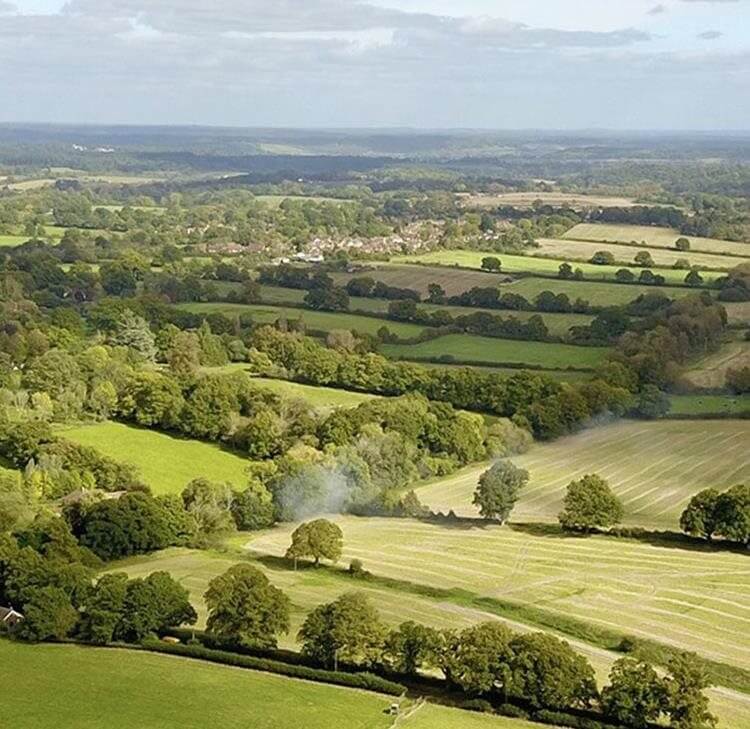Hillside – the end of drop in applications?
On 2 November 2022, the Supreme Court handed down its judgment in the much awaiting case of Hillside Parks Ltd v Snowdonia National Park Authority [2022] UKSC 30. The Court’s judgment suggests that the long established practice of using drop-in applications is in fact much more restricted than previously thought. This judgment therefore has significant implications for both the developers and local planning authorities.
On 2 November 2022, the Supreme Court handed down its judgment in the much awaiting case of Hillside Parks Ltd v Snowdonia National Park Authority [2022] UKSC 30. The Court’s judgment suggests that the long established practice of using drop-in applications is in fact much more restricted than previously thought. This judgment therefore has significant implications for both the developers and local planning authorities.
The Facts
The facts of this case are complicated, and span several decades. In summary:
- The application site comprises around 29 acres of land in Snowdonia National Park (known as “Balkan Hill”).
- In January 1967, the LPA granted full planning permission for the development of 401 dwellings at Balkan Hill (the “Original Permission”) in accordance with a detailed plan referred to as the “Masterplan”. The Masterplan showed the proposed location of each dwelling and the road layout for the Balkan Hill estate.
- Over the years, the Developer applied for and was granted a series of additional planning permissions permitting development which has since taken place on parts of the Balkan Hill site. None of that permitted development was in accordance with the Masterplan.
- In April 1967, the Developer applied for and was granted planning permission to build two houses to the south side of the site in a slightly different position to that shown on the Masterplan. That application was prompted by the discovery of an old quarry (during the construction of estate roads to grant access to that part of the site) which caused problems with the ground levels.
- Between 1967 and 1985 eight further planning permissions were granted to permit construction of 19 further dwellings otherwise than in accordance with the Masterplan. In some of these cases, the departure from the Masterplan was substantial.
- In 1985, a dispute arose about whether the Original Permission remained valid.
- The LPA contended that the only condition attached to the Original Permission (requiring agreement to be reach on water supply before works commenced) had never been complied with. The LPA therefore argued that the Original Permission had never been lawfully commenced, and had therefore lapsed. The judge found that the condition requiring agreement on water supply had been fulfilled for such development as had already taken place, and was capable of being satisfied in relation to further development so long as the prior agreement of the responsible water authority was obtained.
- The judge also found that development had been lawfully commenced as the Developer had constructed sections of road and a number of buildings before the permission had lapsed. While the buildings had been constructed pursuant to the subsequent grants of permission (noted above), those subsequent grants of permission were “merely a variation” to the Original Permission.
The judge also found that “the Master Plan remains in force, and if the development is allowed to progress further it can be completed substantially in accordance with the Master Plan”. The judge declared that the Original Permission had been lawfully commenced and “may lawfully be completed at any time in the future”.
Since the 1985 court proceedings, further development has taken place at Balkan Hill in the north-west part of the site. None of that development has been carried out in accordance with the Masterplan, and the positions, configurations and sizes of the houses built differ significantly from the Masterplan. An estate road has also been constructed over land on which several houses were to be built pursuant to the Masterplan. However, it has all been carried out pursuant to eight further grants of planning permission. Some of those permissions were expressly granted as “variations” to the Original Permission, but not all.
It appears that some buildings on the Balkan Hill site had been completed otherwise than in accordance with any existing planning permission(s).
In May 2017, the LPA wrote to the Developer asserting that it was now impossible the implement the Original Permission further, and all works at Balkan Hill should cease until the planning situation was regularised. There was protracted correspondence between the parties, and the Developer ultimately brought proceedings seeking declarations that the LPA was bound by the 1987 court declaration that the Original Permission was valid, and that in any event the Original Permission remains valid and may be carried on to completion.
At the time proceedings were brought, only 41 of the 401 dwellings originally permitted had actually been constructed (and none of those had been constructed in accordance with the Masterplan or the Original Permission).
The Supreme Court’s judgment
The Supreme Court reaffirmed the well-established “Pilkington principle”.
A landowner can make any number of applications for planning permission for the same site. In general, it is the duty of the local planning authority to regard each application as a proposal for a separate and independent development and to consider the application on its own merits. Where more than one permission is granted over the same site, it is then for the developer to decide which they wish to implement.
The Pilkington principle states that the Court should consider “whether it is possible to carry out the development proposed in that second permission, having regard to that which was done or authorised to be done under the permission which has been implemented” when deciding whether the second permission can be lawfully implemented.
Pilkington therefore established that where a development has already been built in accordance with and under a “Permission A”, the ability to lawfully implement a second, normally full permission (“Permission B”) on part of the same site is dependent on whether it is physically possible to carry out that second permission, given what has been delivered under the first permission.
In Hillside, the development on part of the Balkan Hill site under the post-1987 permissions (which departed from the Original Permission and was inconsistent with the Masterplan) has made it physically impossible and so unlawful to carry out any further development under the Original Permission.
The implications
Drop in applications are useful to both developers and local authorities. From the local authority perspective it allows amendments to be made to wider permissions without having to grant new permission for the entire site. Modern developments often obtain outline consent, with individual phases and parcels being sold to separate developers who have their own specific requirements. Administratively drop in applications make it easier for local authorities to make these changes, if they consider it appropriate.
Fortunately this case is not quite the end of drop in applications that many predicted. The court set out that drop in application will still be possible if the incompatibility between the two permissions was not material, as the Pilkington principle would not be engaged.
However it is important to bear in mind that the test as to whether any departures from the original permission is material is whether it is “material in the context of the scheme as a whole” (and not just in respect of the part which the Developer proposes to amend) and “what is or is not material is plainly a matter of fact and degree” [69].
If a developer is proposing to use a drop-in permission to make an amendment in one part of site that would be material to the scheme as a whole, then they risk losing the benefit of the original permission and then having to apply for a fresh planning permission for any remaining development which has not yet been carried out on other parts of the site (once they proceed to implement the drop-in permission). This would obviously have negative impacts both for the developer, but also for local authorities, who need to meet housing delivery targets.
One solution, though not a very practical one, is for the developer to delay obtaining the drop-in permission until all development which they wish to carry out in accordance with the original permission has been completed. That way, they need not be concerned that implementation of the drop-in permission would render further development under the original permission unlawful, because that development would have already been completed. The Supreme Court confirmed that while implementation of a subsequent drop-in permission would render further development under the original permission unlawful, it would not render unlawful development already carried out in reliance on that permission [66-68].
Another solution is for a developer to seek a fresh application for a new planning permission which covers the whole site, including the proposed modifications. The developer would then have two permissions in respect of the whole site, with different terms, and could proceed under either permission [74].
The Supreme Court did suggest that it may still be possible to grant permission for a variation of an earlier planning permission, providing the new permission expressly granted permission to carry out the development of the whole site described in the original permission as modified to accommodate the development specifically authorised by the new permission. Ordinarily such an application would need to be accompanied by a plan which showed how the proposed new permission incorporated the changes indicated into a coherent design for the whole site [76].
Clearly local authorities will need to carefully consider the implications of Hillside when applications for variations are made. Potentially the development of a protocol for dealing with drop in applications should at the grant of outline planning permission, to avoid future disputes, delays and challenges.
It should be noted that Hillside was an application for full permission, whereas large schemes are now largely outline only, with individual developers seeking reserved matters for their phase. It is not completely clear how the principles in Hillside should be applied to outline consents. Unfortunately, this uncertainty means we are likely to see future cases surrounding the use of drop in applications.

Victoria Searle
Principal Associate
victoria.searle@brownejacobson.com
+44 (0)330 045 2363









































